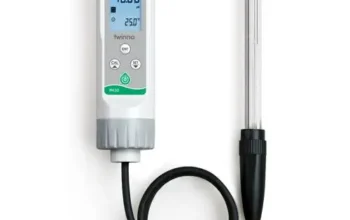In an age where digital transactions have become the norm, it is essential to prioritize security when making online payments. With the proliferation of e-commerce and online banking platforms, understanding how to make safe and secure online payments is crucial. This article will guide you through the best practices for every transaction, ensuring your financial information remains protected.
Understanding Online Payment Systems
Online payment systems are electronic methods that facilitate the transfer of funds over the internet. These systems are designed to streamline transactions and provide a convenient alternative to traditional methods such as cash or checks. Common online payment methods include credit and debit cards, digital wallets, and bank transfers.
A popular form of bank transfer is NEFT, which stands for National Electronic Funds Transfer. NEFT allows individuals and businesses to transfer money between banks in a secure and efficient manner.
Best Practices for Safe and Secure Online Payments
To ensure you’re making safe and secure online payments, follow these best practices:
1. Use Secure and Reputable Websites
When making an online payment, always ensure that the website is secure. Look for URLs that start with “https://” rather than “http://”. The ‘s’ stands for ‘secure’ and indicates that the site uses encryption to protect your data. Additionally, check for a padlock symbol in the address bar.
2. Choose Strong Passwords
A strong password is your first line of defence against cybercriminals. Use a combination of uppercase and lowercase letters, numbers, and special characters. Avoid using easily guessable information such as your name, birthdate, or common words. Opt for a password manager if you have trouble remembering complex passwords.
3. Enable Two-Factor Authentication (2FA)
Two-factor authentication adds an extra layer of security by requiring not just a password, but also a second form of verification. This could be a one-time code sent to your smartphone, a fingerprint scan, or a facial recognition check. Most banks and online payment platforms offer 2FA, and enabling it can significantly enhance your security.
4. Monitor Bank and Credit Card Statements
Regularly reviewing your bank and credit card statements can help you spot unauthorized transactions promptly. If you notice any suspicious activity, report it to your bank or financial institution immediately.
5. Update Software Regularly
Keeping your software updated is vital for online security. Software updates often include patches for security vulnerabilities that cybercriminals can exploit. Ensure your computer, smartphone, and any apps you use for online payments, especially UPI, are always up to date.
6. Use Secure Networks
Avoid making online payments over public Wi-Fi networks, as they are susceptible to hacking. Use a Virtual Private Network (VPN) to encrypt your internet connection if you need to make a transaction on a public network. Whenever possible, conduct financial transactions over a secure, private network.
7. Be Wary of Phishing Scams
Phishing scams involve cybercriminals posing as legitimate institutions to steal your financial information. These scams often come in the form of emails or text messages asking you to click on a link or provide personal details. Always verify the authenticity of the sender and avoid clicking on suspicious links or sharing sensitive information.
8. Use Digital Wallets
Digital wallets, such as PayPal, Google Wallet, and Apple Pay, offer added security for online payments. They encrypt your payment information and provide an additional layer of protection. Additionally, they often offer dispute resolution services in case of a fraudulent transaction.
9. Limit the Amount of Stored Financial Information
Wherever possible, avoid storing your payment information on online platforms. While it may be convenient, it also increases the risk of your data being compromised if the platform is hacked. If you must store your details, ensure the platform has robust security measures in place.
10. Familiarize Yourself with NEFT in Banking
NEFT, or National Electronic Funds Transfer, is a popular method for transferring funds between banks securely. Knowing the NEFT full form in banking can help you understand this service better. Typically, NEFT transactions are completed in batches and processed several times a day. This method is highly secure and recommended for transferring large sums of money.
How NEFT Works:
– Initiation: The sender initiates the transfer through their bank’s online portal or app.
– Processing: The bank sends the transaction details to the NEFT Service Centre.
– Settlement: The Reserve Bank of India (RBI) clears the transaction, and the recipient’s bank credits the amount to their account.
Benefits of NEFT:
– Security: NEFT transactions are highly secure, reducing the risk of fraud.
– Convenience: You can initiate transfers from the comfort of your home.
– No Minimum Limit: NEFT does not have a minimum transaction limit, making it versatile for various needs.
Conclusion
In today’s digital era, making safe and secure online payments is essential to protect your financial well-being. By following these best practices, you can reduce the risk of fraud and ensure your transactions remain secure. Remember to use reputable websites, choose strong passwords, enable two-factor authentication, and familiarize yourself with secure methods such as NEFT full form in banking. By staying vigilant and informed, you can confidently navigate the world of online payments.



